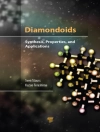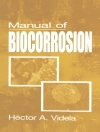This volume provides methods on procedures for assessing the biosafety aspects of probiotics. Chapters are divided into five parts detailing in vitro biosafety assessment, biogenic amine production, D-lactic acid production, toxin production, production of various enzymes, determination of toxicity, mutagenicity, virulence genes, capsule formation, hemolytic activity, DNAse activity, bile salt deconjugation, antibiotic resistance, antibiotic resistance gene transfer, mucin degradation, platelet aggregation, and in vivo biosafety assessment of probiotics including determination of infectivity, reproductive and developmental toxicity, and evaluation of immunological parameters in animal models.
Authoritative and cutting-edge, Biosafety Assessment of Probiotic Potential aims to be a foundation for future studies and to be a source of inspiration for new investigations in the field.
İçerik tablosu
Determination of biogenic Amine Production.- Determination of Gelatinases, Glycosidases, and Enolase production.- Determination of β-Glucuronidase Production.- Determination of Nitroreductase Production.- Determination of Azoreductase production.- Determination of Hemolytic activity.- Determination of DNAse Activity.- Determination of Bile Salts Deconjugation.- Determination of D-lactic Acid Production.- Determination of Antibiotic Resistance.- Determination of Antibiotic Resistance Gene Transfer.- Determination of Toxin Production.- Detection of Toxin Genes by PCR Based Methods.- Determination of Presence of Plasmids and Virulence and Structural Genes.- Determination of Toxicity through Cytotoxicity Assays.-
In vitro Evaluation of the Nitric Oxide Pathway.- Assessment of Capsule Formation.- Assessment of Platelet aggregation.- Assessment of Fibrinogen and Fibronectin Binding Activity.- Assessment of Probiotics Adhesion to Mammalian Cells.- Assessment of Mutagenicity.- Assessment of Induction and Destruction of Thrombi.- Assessment of degradation of mucin.- Evaluation of General Health Status of the Animals during the in-Life Phase.- Assessment of Bacterial Translocation Through Blood Cultures.- Determination of Splenic weight index and Weight-to-length ratio.- Determination of Total liver glutathione and plasma malondialdehyde concentrations.- Determination of Serum Lactate and Fecal Calprotectin for Assessing The Intestinal Inflammation.-
In vivo Evaluation of Adhesion properties of Probiotics.- Determination of
Streptomyces Probiotics oral administration in broiler chicken.- Determination of infectivity of probiotics using animal models.- Determination of Infectivity of Probiotics using Immunosuppressed Hosts.- Assessment of Reproductive toxicity.- Assessment of Developmental toxicity in Zebrafish model.- Assessment of Inflammation in Animal Models (Macroscopic Or Histological Inflammation In The Ileum Or In The Colon).- Assessment of inflammation in animal models (Quantification of
TNFA,
IFNG, IL4, and
IL10 m RNAs by Real-time PCR).- Assessment of inflammation in animal models (Quantification of TNF-α, IFN-γ, IL-4, & IL-10 proteins by ELISA).- Detection of Myeloperoxidase activity by Enzyme Linked Immunosorbent Assay.- Assessment of Bacterial Translocation Through Mesenteric Lymph Nodes [MLN] and Spleen Cultures.












